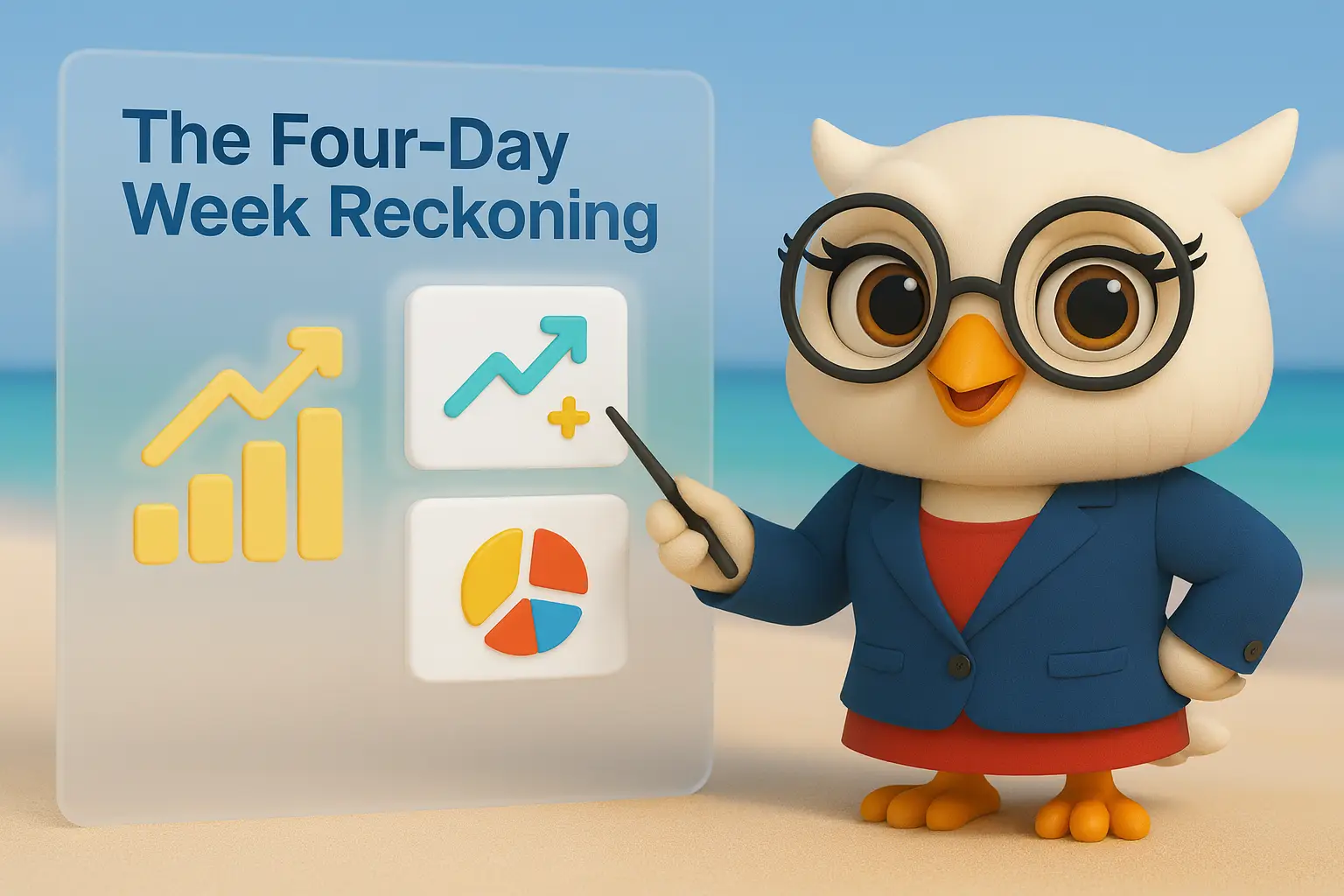The four-day week is no longer a fringe notion, it’s an experiment many organisations are trying, and some are even making permanent. But moving to shorter weeks isn’t just about squeezing efficiency; it shifts culture, employee expectations, and how benefits are used. HR leaders who treat it like a plug-and-play upgrade risk misaligning norms, underutilising benefits, or creating resentment.
Here’s what’s emerging, and how you can leverage your benefits, culture practices, and measurement into this shift.
1. The promise: happier, healthier, more focused
In a multi-country trial involving 141 organisations (including Australia, the UK, and the US), employees in four-day models (no pay cut) reported
less burnout, better health, and improved job satisfaction, all while maintaining output.
(Personnel Today)Australian case studies and reports suggest that shortened work week models correlate with higher engagement, well-being, and retention.
(HRD Australia)The “100-80-100” model (work 80% of the time, get 100% pay, maintain 100% productivity) is becoming the global reference point for flexible work innovation.
(American Psychological Association)
But here’s the catch: benefits uptake, cultural norms, and behavioural responses often shift in surprising ways.
2. What tends to shift (and what’s under the radar)
A. Benefits usage & visibility
When people have more non-work time, they may engage more with benefits (mental health programs, wellness reimbursements, coaching). But that only happens if the benefit design and communication are ready for that shift.
(Great Place to Work Australia)
For example:
Flexible benefits (e.g. “use-it or lose-it” allowances) may need reconfiguring so employees feel empowered to use them without guilt.
Wellness / mental health programs may see greater demand on off-days; you’ll need capacity and support outside “office hours.”
Development programs (courses, microlearning) may see uneven uptake if people prefer decompressing instead of “extra work.”
B. Cultural norms & invisible expectations
Shorter weeks challenge unspoken norms and expectations around “availability.” When not managed carefully, it can erode trust or create new inequalities.
(LHH Australia)
“Being always available” becomes more jarring when fewer days are worked.
Implicit expectations (checking email on off day, last-minute asks) can erode trust.
Coordination across teams becomes a puzzle if different teams align to different off-days.
C. Role variance & fairness
Not all roles translate cleanly. For high-touch or emergency roles, it may create tension between fairness and feasibility.
(People HR)
Customer service, 24/7 operations, support, and emergency functions may resist the switch.
Some roles may move to compressed hours (longer days) rather than fewer days, with tradeoffs to energy and fatigue.
Equity concerns arise: if some teams get 4 days and others don’t, perceptions of fairness matter a lot.
3. How HR can shepherd benefits uptake in a 4-day model (3 strategies)
Strategy 1: Reboot benefit design & communications
Shift benefit enrollment windows or support to align with the new rhythm (e.g. reminders early in the week).
Reframe benefit value in context (“use your off day for that massage, for that mental health check-in”) rather than as a side perk.
Monitor benefit utilisation over time to catch shifts (e.g. mental health usage rising, wellness programs underused).
Strategy 2: Normalise “boundary norms”
Co-design rules around availability (e.g. no expectation to respond on off-day).
Set visible guardrails (e.g. no meeting scheduling on that day).
Train managers and leaders so they don’t implicitly penalise people for taking the extra day off.
Strategy 3: Pilot & measure, then iterate
Start with teams where roles are more outcome-based.
Define baseline metrics for benefit utilisation, engagement, retention, and cultural sentiment.
Use our ROI Calculator to build your case. It’s designed for HR and membership teams to model how changes to your benefits program, like introducing a four-day week or new wellness initiatives, can improve retention, productivity, and overall program value.
Iterate based on where gaps arise (teams, roles, perks).
4. Risks and trade-offs to watch
Risk / Trade-off | What often happens | Mitigation ideas |
|---|---|---|
Burnout on long days | If compressed hours are used (longer daily hours), fatigue may increase | Put caps on daily hours, include frequent short breaks, rotate schedules |
Undelivered coordination | Teams misalign on days off, project handoffs suffer | Use overlapping days, synchronous time, shared calendars, buffer days |
Fairness perceptions | Some teams can’t adopt 4 days, leading to resentment | Provide alternative benefits or compensations, be transparent in decisions |
Benefit underutilization | People avoid using perks fearing “they’re for slack time” | Incentivize, communicate, normalize use (leaders model it) |
5. What to measure (leading + lagging)
Leading indicators: benefit uptake (wellness, coaching, mental health services), requests for flexibility, pulse on norms (surveys), meeting density, satisfaction with off-day structure
Lagging indicators: retention, engagement, absenteeism, productivity metrics, cost of benefits vs usage, voluntary turnover
Use our
ROI Calculator
to see these benefits in action. Enter your organisation’s engagement and retention data to forecast how better-aligned benefits can offset costs and strengthen your case for flexible work.
6. Launch checklist for HR leaders
Assess which teams / roles are good candidates
Engage employees early, survey fears, hopes, preferences
Design aligned benefit offerings & communications
Run a pilot (4–6 months) with control groups
Track usage of benefits, culture signals, outputs
Adjust, scale, or retreat with learnings
Conclusion
A four-day week isn’t just a scheduling tweak. It ripples into culture, norms, benefit behavior, and trust. HR’s role is to be the architect of that space, not just installing a new hour block, but reshaping how people work and live around it.
If you’re exploring a four-day week or any initiative to improve employee wellbeing, plug your assumptions into
our ROI Calculator.
It connects your benefits strategy to measurable outcomes, showing how smarter perks translate into real savings and stronger loyalty.



